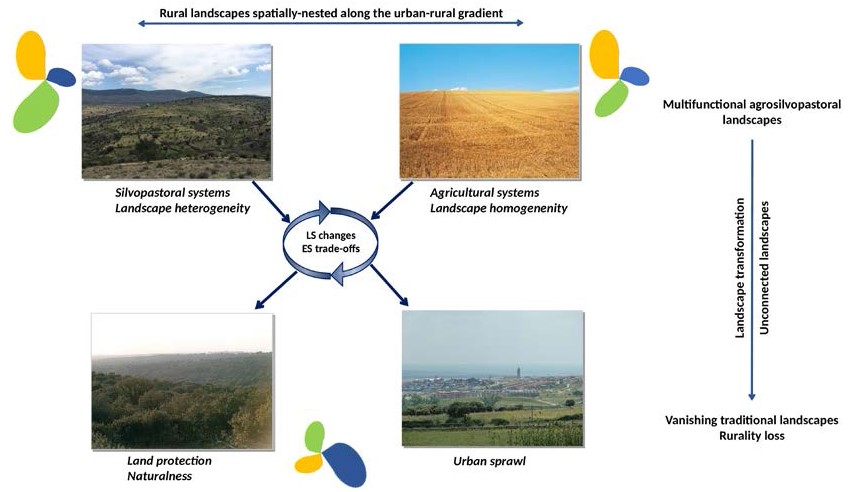Cristina Herrero-Jáuregui; Cecilia Arnaiz-Schmitz; Lorena Herrera; Simon M. Smart; Carlos Montes; Francisco D. Pineda; Maria Fe Schmitz
Aligning landscape structure with ecosystem services along an urban–rural gradient. Trade-offs and transitions towards cultural services
Landscape Ecology 2019, 34:1525–1545
DOI: 10.1007/s10980-018-0756-3
RESUMEN
Context. Urban–rural gradients provide a suitable framework for studying the provision of urban and rural ecosystem services (ES), linked to social welfare. Landscape structure (LS) changes along urban–rural gradients but our understanding of the effects of LS on ES remains at an early stage. Objectives. We have quantified the relationship between changes in LS and ES supply along an urban–rural gradient in Central Spain, and compared the intensity of change with the land conservation status, degree of urbanization and proximity to Madrid city. Methods. We inferred the provision of ES at municipality level based on proxies from socioeconomic data and land use maps, and characterized LS through metrics calculated from Corine land cover maps at two dates. We used Canonical Correspondence Analysis and Generalized Linear Models to analyse the data. Results. There was a marked tendency for change in 20 years towards heterogeneous and poorly connected landscapes. This structural change appeared associated with trade-offs in ES, consisting of a loss of provisioning and regulating services inherent to agricultural and silvopastoral landscapes in favour of tourist-cultural and accommodation services, recently demanded by a growing urban population. The intensity of this change was favoured by urbanization processes, the proximity to the city, and restrictive protection measures linked to supramunicipal land management conservation plans. Conclusions. Our results question the effectiveness of long-term conservation measures taken in Spain to protect cultural landscapes. The innovative approach we use to analyse LS–ES coupling along urban–rural gradients provides a powerful tool for social-ecological land planning
